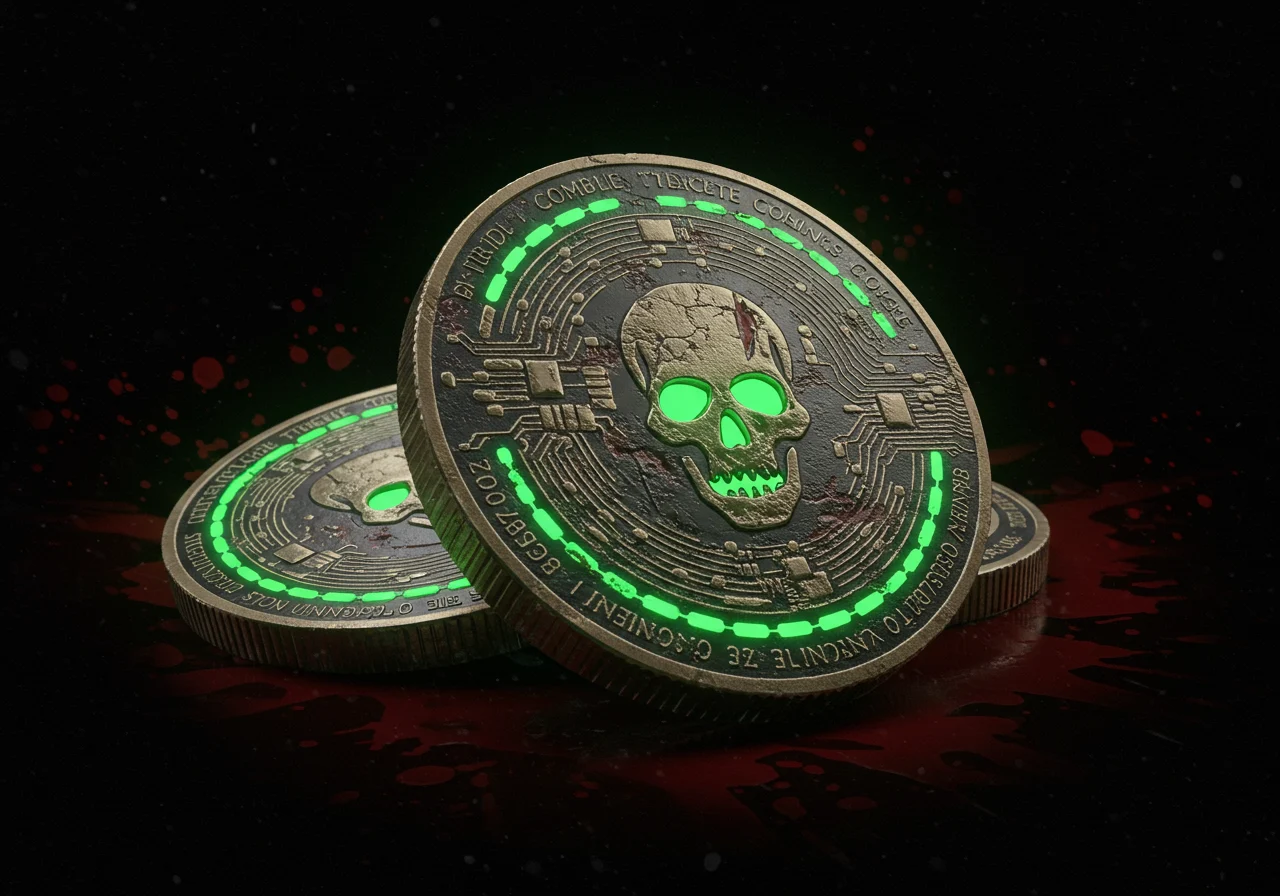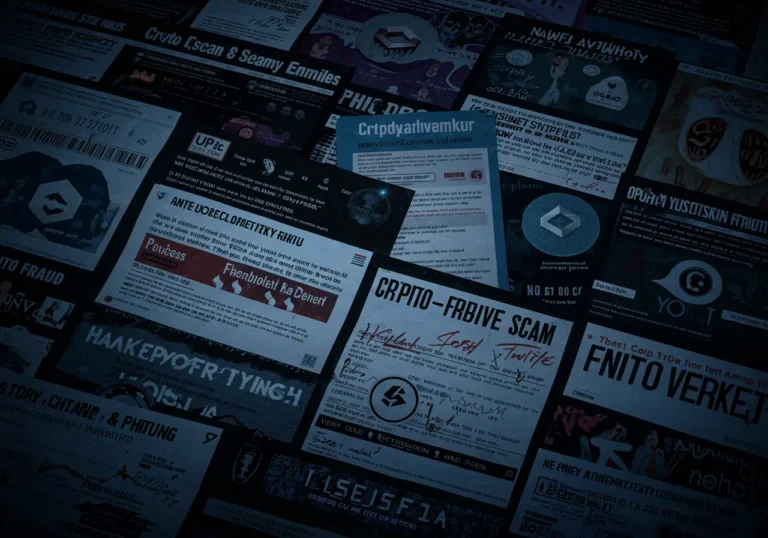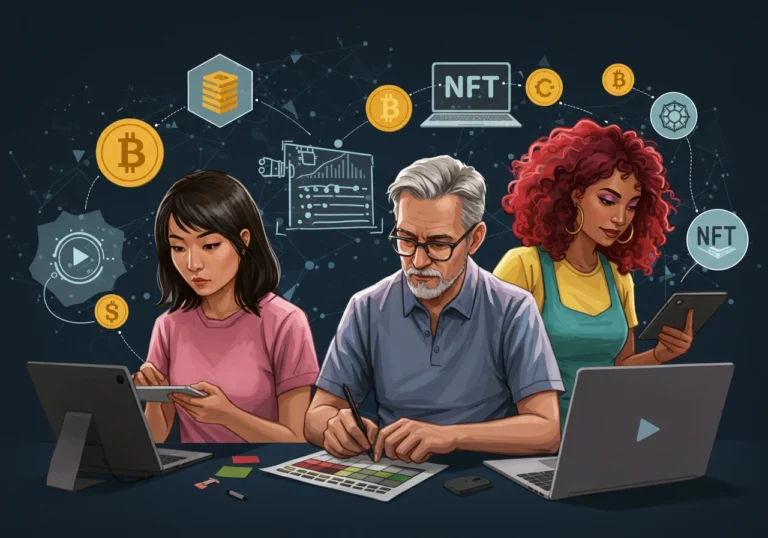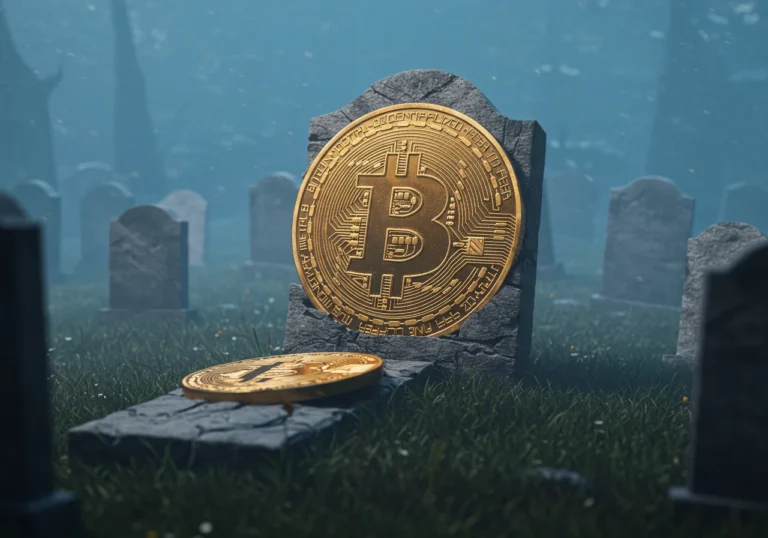The Threat of ‘Zombie Coins’: How to Identify and Exit Dead Crypto Projects
Being honest with you, zombie coins are not mystical. They are simply tokens tied to projects that have stopped moving forward. Sometimes they die slowly. Sometimes they collapse fast. Either way, if you know the signs and act early, you can reduce losses and sleep better.
Zombie Coins: What they are
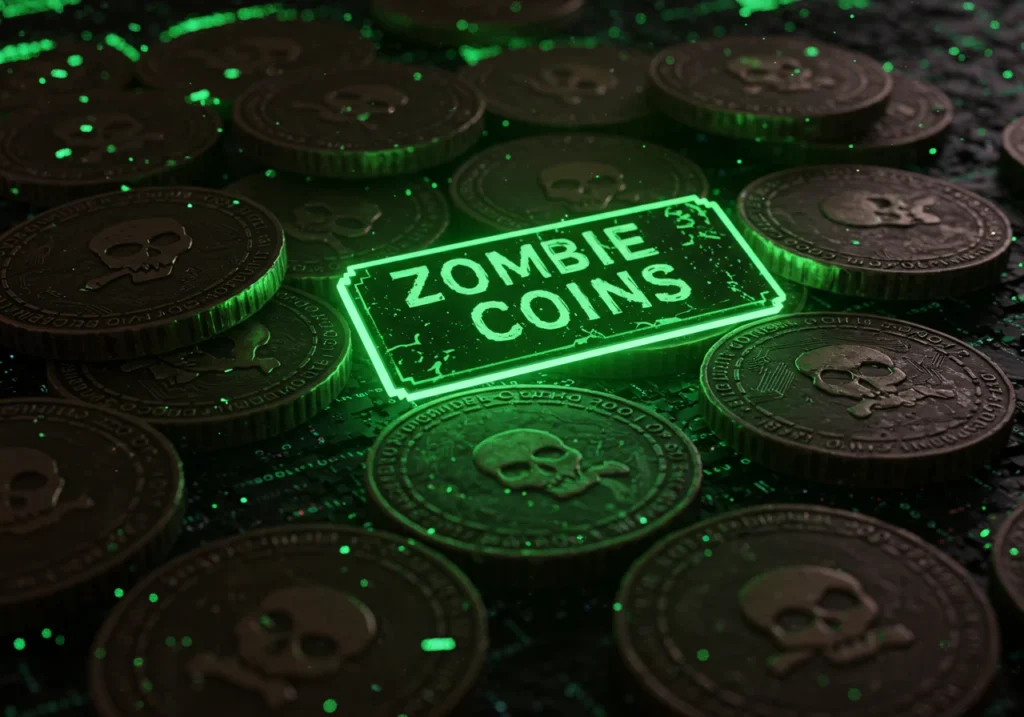
Zombie Coins are tokens from projects that have become inactive, abandoned, or essentially worthless. The project might still exist on the blockchain, but the people, code updates, or economic model that gave it value are gone. Investors are left holding an asset that trades for pennies — if it trades at all.
These coins matter because the crypto space is full of projects. Some are brilliant and useful. Others are temporary, poorly run, or even scams. Spotting a Zombie Coin early can save you time, money, and stress.
A simple way to think about it
Imagine a shop on your street. If it closes the shutters and never reopens, the shop is dead. A Zombie Coin is like that shop: it may have a sign, but no one is running it anymore.
Why projects become Zombie Coins
There are many reasons a crypto project dies. Most are practical, not dramatic.
Common causes
- Team leaves or disappears. Founders move on or vanish. No leadership means no progress.
- Funding runs out. The project burns through funds and can’t pay developers.
- Product-market fit fails. The tech is clever but nobody needs it.
- Security failures. Hacks or bugs can drain funds and destroy trust.
- Regulatory pressure. Rules or enforcement cause shutdowns.
- Tokenomics breaks. Poor economic design leads to collapse.
Knowing these causes helps you judge risk before you invest.
How to spot Zombie Coins — quick signals to watch for
Spotting a dying project means checking a few simple signals. If several red flags appear, treat the coin as risky.
Governance and communication
- Team stops posting on official channels.
- Roadmap updates are missing for months.
- Community questions go unanswered.
Development activity
- No commits on the project’s GitHub or code repo.
- No releases or bug fixes for a long time.
- Promised features never appear.
Market behavior
- Trading volume falls to almost zero.
- Exchanges delist the token.
- Liquidity in pools dries up.
Financial and legal signs
- Treasury wallets are empty or show strange transfers.
- Key partners withdraw support.
- Sudden regulatory notices.
If you see one sign, be cautious. If you see several, act.
Simple tools to check a token’s health
You don’t need to be a developer to use useful tools.
Check explorers and repos
- Look up the token contract on a block explorer. Verify transfers and holder counts.
- Visit GitHub and check recent commits. No activity in months is a red flag.
Read community channels
- Scan Discord, Telegram, and Twitter. Are moderators answering? Are updates real?
- Look for clear, verifiable links — not vague promises.
Examine liquidity
- For tokens on DEXs, check pool liquidity. If pools are tiny, trading is risky.
- See if major exchanges still list the token.
Look at token distribution
- If a few wallets hold most tokens, selling pressure can wipe out price quickly.
- Use on-chain analytics sites to see whale concentration.
These checks take minutes and can reveal discomforting truths early.
How to exit a Zombie Coin safely

If you accept that a token is turning into a Zombie Coin, the next step is to leave without panic. Here is a calm, practical approach.
1. Pause and assess
Don’t rush. Quick panic sells often lock in losses. Pause. Breathe. Gather data.
Ask: Is the project truly dead or in a temporary lull?
2. Decide a threshold
Choose a price or market condition where you will sell. This prevents emotional decisions later.
Example: “If volume is under X and there’s no update in 30 days, I’ll exit.”
3. Reduce exposure in chunks
Sell in small parts rather than all at once. This lowers the risk of being front-run and can get better average prices.
4. Use limit orders and check slippage
If liquidity is low, placing a large market sell will tank the price. Use limit orders or break sells across pools.
5. Move funds to safer assets
After selling, put proceeds into stablecoins or well-known projects while you plan next moves.
6. Keep records
Save screenshots and transaction hashes. If later you need to prove something or track your history, you’ll be glad you did.
What if you can’t sell — trapped tokens
Sometimes tokens have no market. What then?
- Hold in a cold wallet until something changes. Don’t risk private keys on suspicious platforms.
- Consider swaps via bridges or DEX aggregators if slight liquidity exists elsewhere.
- Accept the loss and learn; treat it as research expense.
No one likes being stuck, but safety comes first.
How to avoid Zombie Coins before buying
Prevention beats cure. Use plain safeguards.
Do the basic homework
- Read the whitepaper and check the roadmap.
- See who’s on the team and verify identities.
- Confirm audits and reputable partners.
Diversify and size positions
Don’t put a large portion of capital in a single unproven token.
Stick to projects with real usage
Tokens tied to real users, active products, or revenue are safer.
Set alerts
Use price and volume alerts. If a token starts to show early decay, you’ll know fast.
Short case study (simple example)
A small DeFi token launched with hype. The team promised a marketplace and shiny features. The market cap rose fast. Then the lead dev left. Tweets slowed. Liquidity fell. People realized the marketplace never launched. Early investors sold. New buyers vanished. The token became a Zombie Coin.
Those who sold in stages when the first warnings appeared lost less. Those who ignored the signs lost most.
What I think about it
Zombie Coins are part of crypto’s reality. Some projects will thrive. Others will fade. The difference for you is how prepared you are. If you check a few clear signals, set simple rules for exits, and don’t let fear drive sudden choices, you will handle these situations with much less pain.
Think of this as a safety habit. A little attention today can prevent big regret tomorrow.
Quick summary
- Zombie Coins are tokens tied to inactive or abandoned projects.
- Watch for silence from the team, no development, low liquidity, and delistings.
- Use explorers, GitHub, and community channels to check health.
- Exit in calm stages: set thresholds, sell in chunks, use limits to reduce slippage.
- If trapped, secure tokens in cold storage and learn from the experience.
- Prevent future losses by diversifying, checking audits, and sizing positions.
FAQ
Q: Can a project come back from being a Zombie Coin?
A: Yes, sometimes new funding or a revived team can restart a project. But this is rare. Don’t rely on hope.
Q: How fast should I act when I detect warning signs?
A: Act within a plan. Give a short window for verification, then follow your preset exit rules.
Q: Are there tools that automatically detect dying projects?
A: Some analytics platforms flag low activity or sudden drops. Use them as signals, but always verify manually.
Q: Is it always better to sell early?
A: Not always. Selling too soon can miss recoveries. Balance data with a clear exit plan to avoid emotional swings.
Q: How can I learn more without risking money?
A: Follow reputable research blogs, use testnets, and try small amounts when exploring new projects.

Hello, I’m Edmilson Dias, founder of CoinBringer. I created this platform to guide people through the fast-moving world of cryptocurrency with clarity and safety. With years of research in blockchain and digital security, my goal is to translate complex topics into practical knowledge, offering reliable tutorials, safety insights, and guidance for both newcomers and experienced users.
Discover more from CoinBringer
Subscribe to get the latest posts sent to your email.

